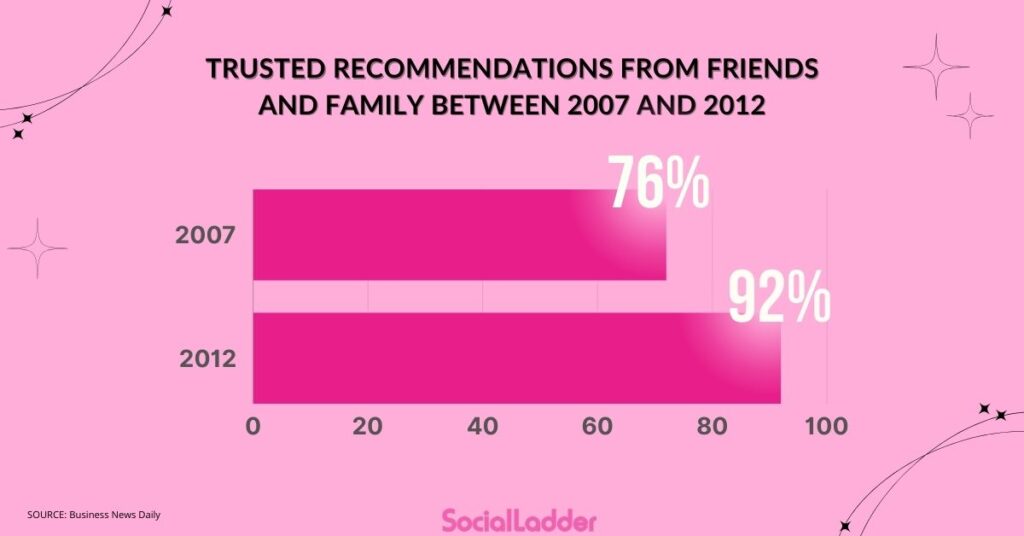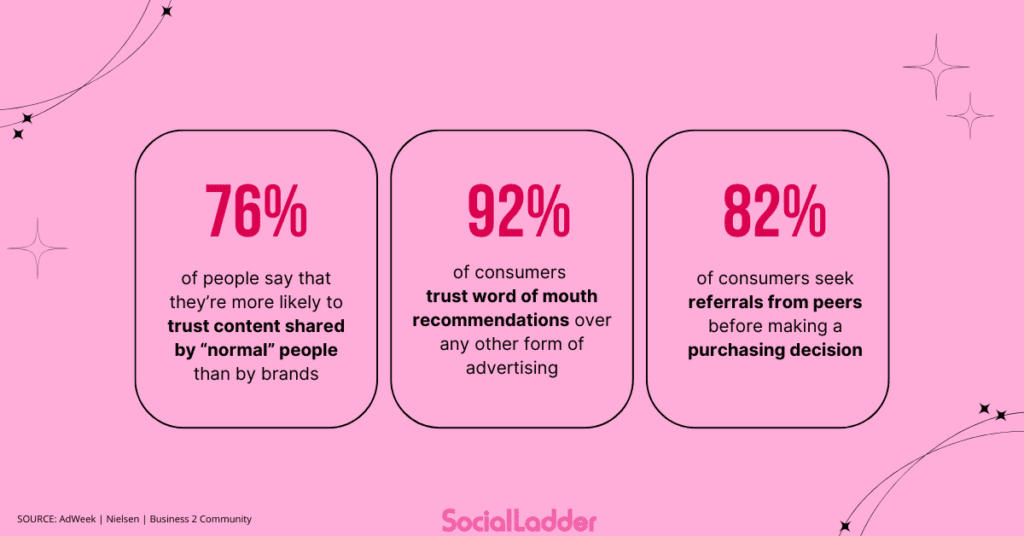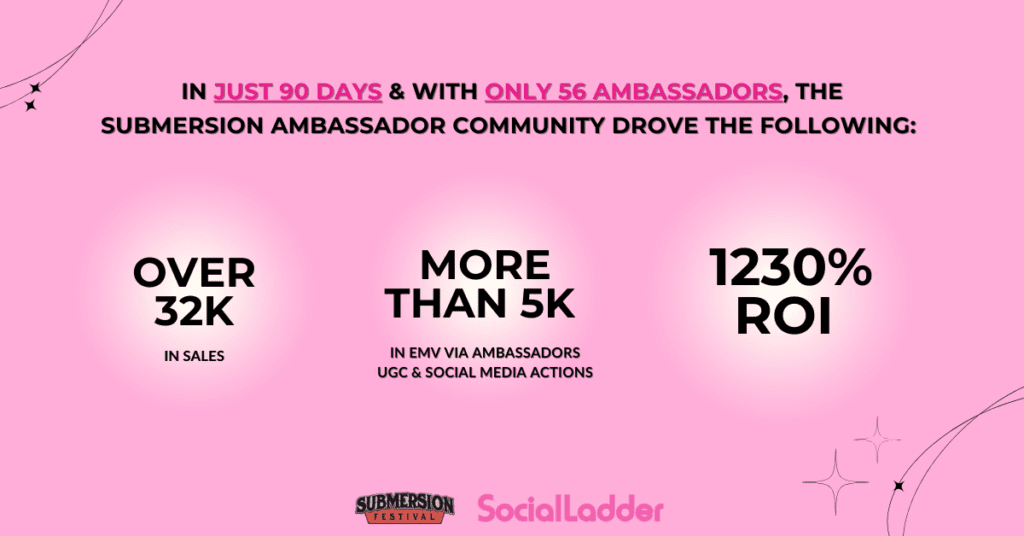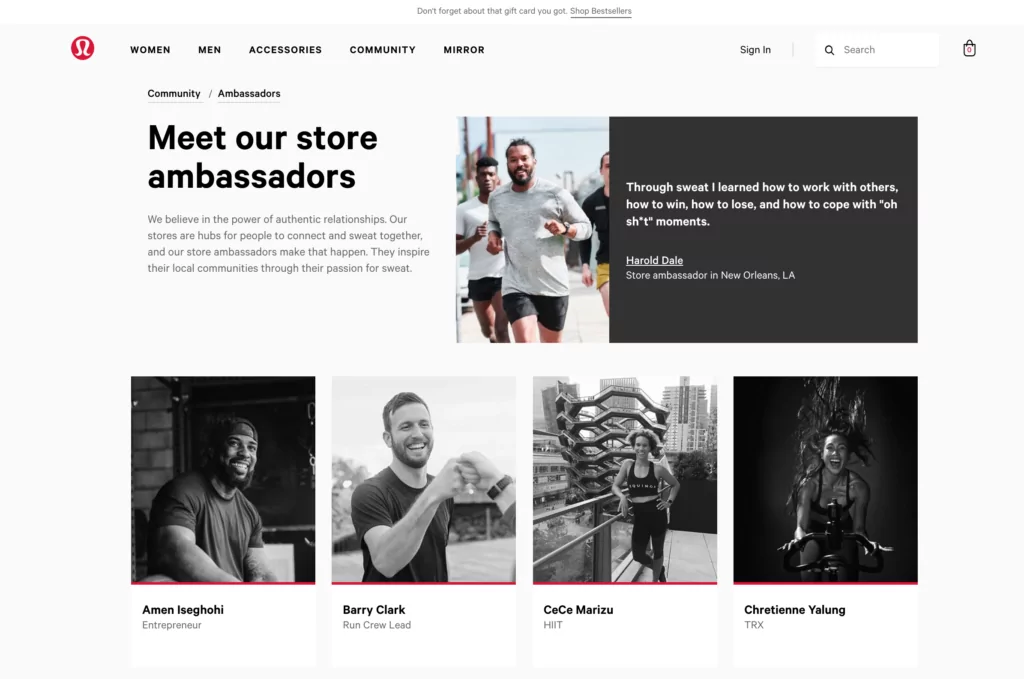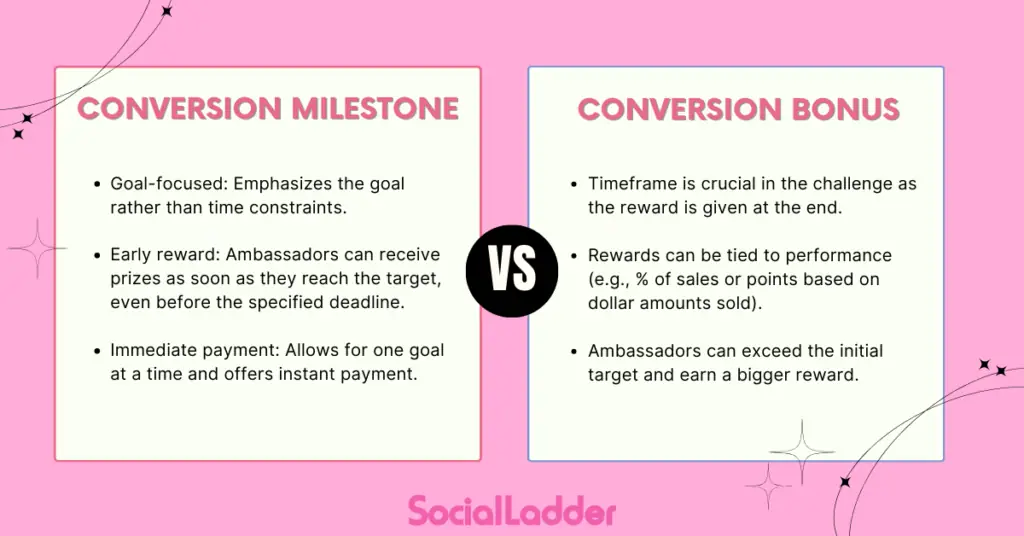Ambassador marketing has become one of the best methods for increasing brand awareness, trust, referrals, loyalty, and more.
In the vibrant landscape of digital marketing, ambassador marketing stands out as a revolutionary strategy that has reshaped the relationship between brands and consumers.
+ Read More: 5 Essential Features to Look for in Brand Ambassador Management Software
By shifting away from impersonal advertising methods such as banner ads & pop-up windows, brands that adopt ambassador marketing are finding greater success in building loyal communities and driving long-term growth.

A Brief History of Ambassador Marketing
The concept of ambassador marketing isn’t new; it has roots in the age-old practice of word-of-mouth promotion. However, its formalization as a marketing strategy has revolutionized how companies approach brand promotion.
Originally seen as simply another form of celebrity endorsement, ambassador marketing has evolved to involve individuals who resonate deeply with their audiences, forging a more genuine brand-customer connection.
Ambassador marketing is an approach that shows brands that take a one-size-fits all approach to advertising using tactics like banner ads & pop-up windows is a thing of the past.
For brands to win the heart of consumers, they should bet on building a brand community to see long term results.
And as you will read in this article, an ambassador community works even better than traditional advertising.
Countless consumer brands like Bubble, DripDrop, goPuffand Benefit have growing brand ambassador programs. Some even have thousands of ambassadors across the world.
But ambassador marketing is a term that is surrounded by confusion since there are similar concepts like influencer marketing, affiliate marketing, or even advocacy marketing.
But, are they the same thing? Not really.
In this article, we will explain all you need to know about ambassador marketing so you have a clear understanding of what it is, why it works, its ROI, and what the best strategies for success are.
What is ambassador marketing?
Ambassador marketing statistics
Ambassador marketing benefits
What do brand ambassadors do?
Ambassador marketing strategies
Strategy 1: Affiliate brand ambassador program
Strategy 2: Gamified brand ambassador program
Strategy 3: Student ambassador program
Strategy 4: Employee ambassador program
Strategy 5: Informal brand ambassador program
Strategy 6: Combined ambassador marketing strategy
The ROI of ambassador marketing
Final thoughts on ambassador marketing
Your next steps
What is Ambassador Marketing?
Ambassador marketing is a strategic way for brands to market through their top customers vs to them, by turning them into long term influencers for the brand.
Brand ambassadors usually begin as devoted fans of a brand.
Through their genuine passion for the product or services, ambassadors can organically establish connections with individuals similar to themselves. This not only aids in forming a robust community of like-minded supporters but also ensures the brand stays prominent among potential new customers.
Influencers, celebrities, students, employees, and customers can all be brand ambassadors. The key factor is that they need to know the brand and its products intimately, have a sincere understanding of the brand’s persona, and be aligned with its mission.
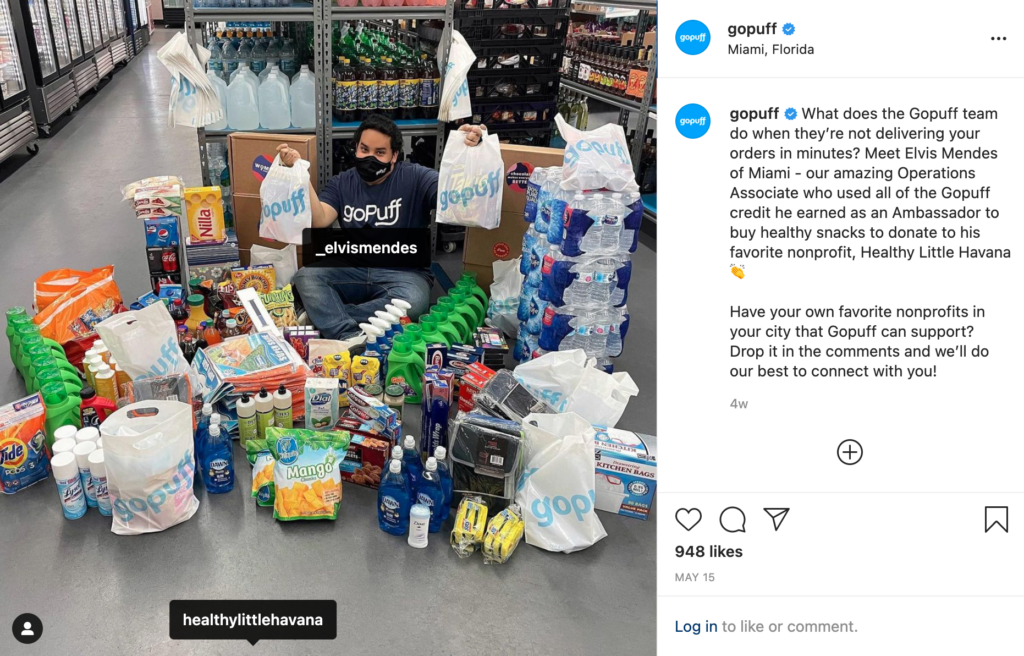
Why Ambassador Marketing is Gaining Popularity
Brand ambassadors are more than just salespeople; they are genuine fans and advocates of the brand. Their connection to the brand adds credibility and relatability to their messaging. These connections aren’t based on transactions but on shared passions and experiences, creating a more profound impact on consumer behavior.
The two unbeatable factors that Ambassador Marketing will bring you are:
- Authenticity and Trust: In a world oversaturated with advertisements, consumers seek authentic experiences and trustworthy recommendations. Ambassador programs embody this trend, allowing real people to share genuine stories and experiences tied to a brand. This authenticity effectively penetrates markets by fostering trust and making each message feel personal and credible.
- Community Building: Brands leveraging ambassador marketing create ecosystems of like-minded individuals who share common interests and values associated with the brand. This sense of belonging strengthens customer loyalty and increases the likelihood of repeat purchases and organic advocacy.
Also, ambassador marketing can overlap with other types of marketing. Like influencer marketing, referral marketing, advocacy marketing, and affiliate marketing.
But it all depends on the strategy you have for your brand ambassadors. Later in this article, we will talk about the different types of ambassador marketing strategies.
However, before all of that, there is a very important question we need to answer:
Is ambassador marketing worth it?
To answer that, let’s take a look at some statistics.
Ambassador Marketing Statistics
The following statistics are intended to paint a picture of the current state of ambassador marketing.
- 88% of marketers prefer working with influencers with 100,000 followers or less. While 35% prefer people with 10,000 followers or less.
- 92% of consumers trust word of mouth recommendations over any other form of advertising
- 76% of people say that they’re more likely to trust content shared by “normal” people than by brands.
- 82% of consumers seek referrals from peers before making a purchasing decision.
- 83% of consumers say word of mouth has an influence on their purchasing decisions.
- 67% of consumers report they are more likely to purchase a product after a friend or family member shared it on social media or email.
- 89% of marketers say influencer marketing is effective.
- Companies earned on average, $5.78 per dollar spent on influencer marketing in 2019. While top-performing companies earned up to $18 per dollar.
- The market share of micro-influencers is expected to grow to 95% in 2022.
With these statistics, the value of ambassador marketing is clear. And it will continue to grow in the coming years.
Now, let’s take a look at the specific benefits of ambassador marketing.
Ambassador Marketing Benefits
There are many direct and indirect benefits to building an ambassador community. Any strategy that grows a brand’s community and improves the relationship between the brand and customers ultimately leads to a stronger company.
Ambassador Marketing Increases Brand Trust
This is a fact:
People trust other people for brand recommendations more than traditional advertising. With traditional advertising, we mean paid media, tv commercials, billboards, etc.
And those people recommending products don’t even have to be experts. The value of their opinion comes from their honesty.
These are the steps a consumer takes to recommend a product.
The consumer starts being impartial towards a brand. Then, he/she tries a product, likes it consistently, and tells someone else about it who might benefit from it. It can be a friend, family member, or his/her online network.
That is called word of mouth.
Their opinions come from experience, so when a person gets recommended a product, he/she will trust the brand.
For someone to make a purchase, he/she first needs to trust the solution.
If chosen correctly, brand ambassadors are people who through experience loved a product and then were invited to be ambassadors. Making their branded content genuine.
Ambassador Marketing Increases Brand Awareness
One of the main goals of ambassador marketing is brand awareness.
This is achieved mainly through social media content. However, your strategy can include in-person activities that also increase awareness. For example, hosting classes or events.
+ Read More: Field and Influencer Marketing: A Dynamic Duo for Amplified Brand Visibility
A misconception about brand awareness and ambassador marketing is that more followers is better.
After all, your brand wants to reach as many potential customers as possible. But that is not always the case.
While you can invite big celebrity influencers to be ambassadors, a strategy that involves people with relatively small followings works the best. Even for awareness campaigns.
Why?
Because smaller influencers are perceived to be more authentic and have better engagement rates. Meaning that the traffic and referrals they get have a better chance of converting.
Sure, they have a smaller reach, but they convert better. That is why companies have programs with thousands of ambassadors.
Additionally, if your ambassadors are part of your target market (they should), their network will most likely be part of it as well.
Success Story: Kendra Scott College Ambassador Program
The Kendra Scott College Ambassador Program serves as a prime example of innovative brand engagement. Through SocialLadder‘s gamified Leaderboard feature, ambassadors are motivated to compete and climb rankings, resulting in a remarkable 48% increase in social media activity.
Some results of Kendra Scott’s program, managing 200 ambassadors on 100 campuses:
- Increased EMV per post +104%
- Increased overall impressions +169%
- Top posts gaining upwards of 240K views on TikTok
- Top liked posts on TikTok gaining 19K+ likes
- Total TikTok follower account is 1 million
Read all the details here.
Ambassador Marketing Gets Sales
We have established that the awareness a brand gets from ambassadors is of higher quality. We have also established that people trust products others recommend.
When you have many people talking about your brand, and they trust your products, you get sales.
It’s clear that’s a winning combination. They help cut through the noise of traditional marketing channels, reaching potential customers on a more personal level.
Success Story: Mad Rabbit Ambassador Program
Mad Rabitt is a great example of how ambassadors can help you boost your sales.
Some results of Mad Rabitt’s program, managing 4,500+ ambassadors:
- Increased the size of their ambassador team by 1.7X
- Revenue per month has grown 3X
- The average order increased from 1.7 units to 2 units as a direct impact of ambassadors to sales
- Average order value went up 50%
- A new customer referred to by an ambassador has a higher checkout than a normal check out value
Read all the details here.
But ambassadors also participate in getting sales directly. Your ambassador marketing strategy can involve giving your ambassadors a unique code they can share with their family, friends, colleagues, and followers.
When these people purchase a product using that code, the ambassador gets a commission or reward. This way, ambassadors are encouraged to refer as much as possible. More sales mean more commissions.
Just take a look at how much an ambassador for the clothing brand Shein earned from commissions.
That’s a lot of referrals.
But wait. There is also an emotional reward for ambassadors. Because they genuinely love the brand, and their following is built of people who they don’t want to lose trust with, having people they know, buy and also fall in love with your brand is rewarding in itself.
As you can see, with an ambassador program you are setting up an awareness, trust, and sales machine.
What do Brand Ambassadors do?
To fully understand how ambassador marketing works, we need to talk about the activities that ambassadors can do for a brand.
User generated content
With user generated content (UGC), we mean any piece of online content that is not created by the brand but is talking about your brand. It can be an image, video content, story, or blog post, posted on social media or a website.
This is the biggest tool for ambassadors in most ambassador marketing campaigns because it’s the easiest way to reach their network.
It’s also a very effective tool.
79% of people say UGC highly impacts their purchasing decisions.
UGC is perceived as authentic and genuine since it is coming from a customer or brand fan. That is why consumers respond better to it.
For your ambassador marketing strategy, you have to be creative about the ways you can use this tool to reach your goals.
For example, if your brand is starting to sell a product at a new supermarket chain, ambassadors should be tasked to post an image or video of your product in that store.
This way, the audience will know where to buy the product.
In-person events
Online activities aren’t the only effective way to increase awareness and sales. Ambassadors can host events, conferences, teach classes or even give out samples representing a brand.
The first case that comes to mind for applying this type of activity is hyperlocal campaigns. This type of campaign is usually for promoting a new store location, an event (music festival), or expanding to a new market.
By using the SocialLadder platform the Submersion team was able to track everything easily, manage rewards, & report on performance.
Another great example of using in-person activities to grow a brand community is Lululemon.
Lululemon ambassadors are local fitness experts who host training classes and sessions in stores in their neighborhoods. This works great because it encourages people to go to the stores and get to know the products. In addition, they’re activities that fit the brand image perfectly and are hosted by people who feel familiar because they are from the same area.
Basically, ambassadors can do field marketing or experiential marketing activities if it benefits the brand.
Ambassador Marketing Strategies
Now it’s time to get into the most popular ambassador marketing strategies that you can try.
As you will see, ambassador marketing is very versatile and there are many approaches you can take to harness the power of authentic branded content.
The best strategy for your brand will depend on your specific goals, so think of these strategies as a starting point.
Strategy 1: Affiliate Brand Ambassador Program
This strategy works similarly to any affiliate marketing program. This is how it works.
First, a brand recruits ambassadors through an online form (most of the time) or any other method. After vetting candidates and selecting the best ones, the brand gives them a unique code they can share with anyone.
Then, the ambassador creates content following the brand’s guidelines, but without a strict schedule. In the content, they share their unique code. They can also share this code directly with their friends and family members.
Every time someone makes a purchase using the ambassador code, they earn a commission.
What are the benefits of this strategy?
This strategy is fairly easy to manage considering that the brand doesn’t have to worry about everything ambassadors do. After sharing content guidelines and best practices, ambassadors should be able to create branded content whenever they want.
Additionally, ambassadors are motivated by the fact that the more sales they get, the more commissions they will earn. This is the main reason why affiliate marketing programs work.
Another benefit is budget flexibility.
Since the brand is paying commissions, they only pay for conversions. Allowing brands to quickly expand the program without breaking the bank.
On the other hand, the flexibility that benefits affiliate ambassador marketing programs can also be a problem if the ambassador community is not managed correctly.
When people don’t feel a connection with the brand and there are other personal responsibilities, it can be easy for them to just stop participating and end up leaving the program.
Churn will always happen in ambassador programs, especially in affiliate programs, but it can be controlled with effective community management.
SIMPLIFYING MANAGEMENT: DISCOVER EFFECTIVE STRATEGIES TO REWARD AMBASSADORS
Strategy 2: Gamified Brand Ambassador Program
This strategy consists of recruiting any type of ambassador through any recruiting method, providing guidelines, minimal training, and assigning optional challenges/tasks in exchange for a reward.
To understand how this strategy works, we will use an example.
Let’s say your brand is opening a new store location and you want your target audience to know it’s open and where it is.
Your community manager then posts a new challenge for brand ambassadors that says:
Hey everyone! We are very happy to announce that we have opened a new store in: (location). We want to spread this good news to as many people as possible with your help. For this challenge, you need to post an Instagram story of yourself in our new store.
Please remember to follow our content guidelines and use the hashtag #example!
Then, take a screenshot of your post for approval.
In exchange for the task, ambassadors would get a reward of your choice. The easiest way to pay for completed challenges is through cash payments but there are other options as well.
Since the tasks are optional, it gives the ambassadors the freedom to manage their own time. Sounds similar to the affiliate strategy. However, challenge-based ambassador programs have better participation rates.
This is thanks to the gamification element. Meaning that it feels like a game for ambassadors. They complete a challenge and get a reward.
They don’t have to think about what to do to promote the brand, they just have to follow the instructions whenever they have the time.
Engagement fuels the advocacy engine.
Creativity is the key to making your program work. At SocialLadder, we constantly create new challenge types, helping account managers keep the program successful.
Two successful examples of challenges created by our team of experts are the Conversion Milestone and Conversion Bonus Challenge.
Take a look:
Our platform is the only brand ambassador management software that has gamification and automation built in so brands can easily assign challenges and track ambassador performance in real-time.
If you want to keep your ambassadors engaged, make sure to check out our Updates & Features section. There, you’ll get a sneak peek at all the offerings that the SocialLadder platform brings to your daily life.
Strategy 3: Student Ambassador Program
Another popular strategy is recruiting students to become ambassadors. It can be a challenge-based or affiliate program, but the difference is that the selected ambassadors are college students.
This strategy is ideal for brands that target specifically this demographic. It has all the benefits of a brand ambassador program but it is highly targeted.
The thing that makes students so effective is that they are generally very social and their network is almost completely made up of other students. So when they create content, it will increase awareness among other students in your target audience.
If your brand also targets other demographics, it’s common for brands to have more than one program, including a campus ambassador program.
Bumble is a great example of this. They have a successful college brand ambassador program as well as a program for city reps.
This allows them to target different demographics at the same time.
Below are the core benefits that student ambassador programs can bring to your brand’s outreach.
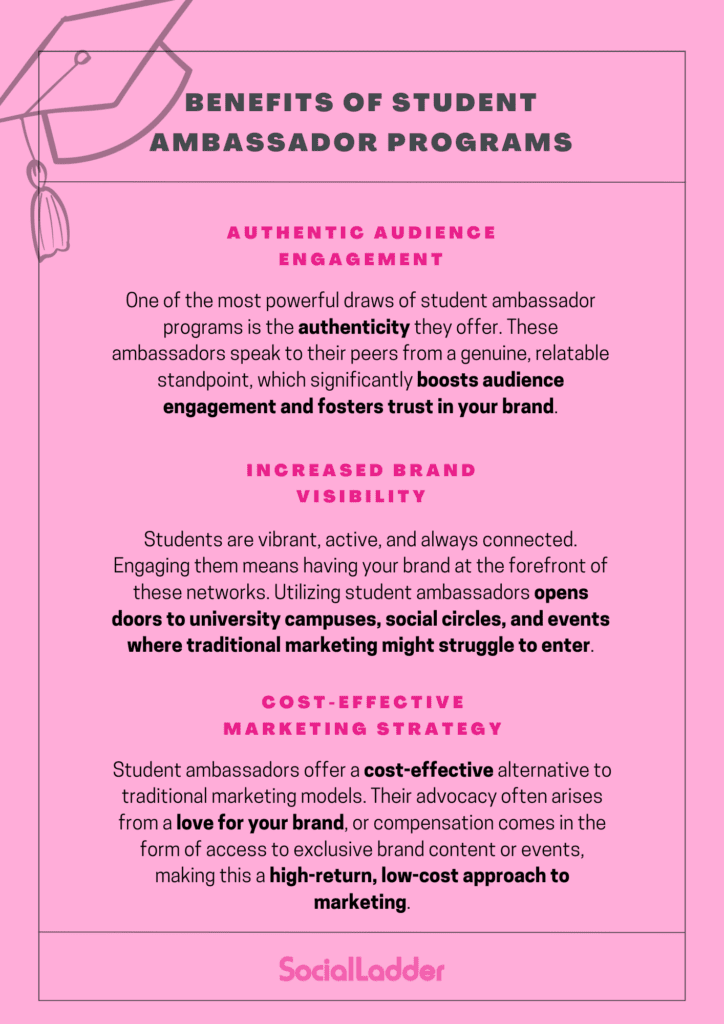
You can read more about how to maximize the impact of Student Ambassador Programs here.
Strategy 4: Employee Ambassador Program
Employee ambassador programs are a smart way to get people who know your brand from the inside to contribute to the marketing goals. Even if they are not part of the marketing department.
It works like this.
A company tells its employees that they can earn extra income by doing ambassador activities such as posting a story with a product.
Then, the company pays them for the completed activities. It’s common for brands to add this payment to their checks as extra hours, depending on how long a task would take.
In any program, you want your brand ambassadors to feel connected with the brand. The first place many people think is their customer base. And while that is also a great approach, you should look into your employees as well.
They already have a deep connection with the company and they understand the brand image better than anyone else. Besides, they have professional experience working with the people in the organization managing the program.
So, the relationship between the brand and the brand ambassadors will already be nurtured. And as we say every time we talk about brand ambassadors, that relationship is crucial for engagement.
+ Read More: How Employees Can Become Brand Ambassadors
It’s clear that even if your employees have a small following on social media, their contribution has a lot of value.
This strategy can be managed internally using the company’s communication channels. However, the best option is to adopt a challenge-based approach. This helps the company keep the program organized and ROI can be tracked.
Strategy 5: Informal Brand Ambassador Program
Another strategy that you should be considering is a type of referral program. Where you assign a unique code to anyone who registers to the program. There is no need to vet all the applications since the participants won’t technically be brand ambassadors. They represent the brand as customers, but they are not official faces of the brand.
Here, the brand doesn’t assign tasks. Instead, the users can share their unique referral code to his or her friends and family. If those people make a purchase with that code, the informal ambassador gets a reward.
It can be store credit or a simple discount.
This strategy is used by industry giants such as Uber or Glossier.
One of the benefits of this strategy is that it is relatively hands-off. It is all about incentivizing customers to bring in new customers. This is a genuine interaction and that is why it works as an ambassador marketing strategy.
Strategy 6: Combined Ambassador Marketing Strategy
We want to include this as a strategy because it is worth noting that you can use different approaches at the same time to maximize the benefits of ambassador marketing.
This is what happens when companies see success with their initial ambassador program and scale it enough to feel comfortable adding new programs.
It’s not too difficult to imagine the possibility of having a group of campus brand ambassadors, another group of city reps, and at the same time having an employee ambassador program.
In the end, managing and tracking these communities can be done using the same methods and brand ambassador management platform.
There are many examples out there of brands with multiple ambassador marketing programs running at the same time. For example, the previously mentioned brand, Bumble.
The ROI of Ambassador Marketing
For any marketing strategy, brands need to measure the return on investment to know precisely how effective the strategy is.
For ambassador marketing, measuring the ROI can be a challenge without a proper strategy in place.
In fact, only 67% of marketers measure the ROI from influencer campaigns. This applies to ambassador marketing campaigns since the metrics are basically the same for the most part.
Basically, a third of companies don’t know how effective their campaigns are.
That’s not good.
So, how can you measure the ROI of your ambassador marketing programs?
Following these 4 steps:
1. Set your goals
Ambassador marketing can accomplish many things. However, this doesn’t mean that you should just wing it and see what happens next.
This will result in having a bunch of data that won’t tell you if your strategy is going well and you won’t know what to do next.
Visualize what you want to achieve with your ambassador marketing campaign. The most common goals are to increase awareness or sales. But you should try to be as specific as possible. For example, increase referrals, user generated content, build an audience, increase earned media value, etc.
2. Determine your KPIs
Now that you have your general goals, you can think of the metrics that would show how successful the campaign was at achieving them.
It should be clear which metrics are ideal. For example, if you want to build brand awareness, you should track impressions.
Then, set a target number for those metrics you’d like to reach with your campaign. This number should reflect a realistic increase in your current analytics.
For the first few weeks, you should be adjusting your targets once you get some data so that you can set realistic expectations.
3. Evaluate your investment
After defining your KPIs, evaluate the amount of money it will cost to run the strategy. For this task, you will have to determine how many ambassadors you need, how you will be paying them, as well as any tools you use.
These are the most common ways to pay brand ambassadors:
- Cash payments
- Commissions
- Rewards such as free products or discounts
Consider all the options as well as the tax implications to determine which method will benefit your strategy the most.
4. Track your metrics
With all that out of the way, you have to decide how to measure the metrics. For sales, conversions, and referral-related metrics, your best friend will be affiliate links and unique promo codes. For tracking your advertisement campaigns across platforms, use Voluum. For website impressions, UTM codes and Google Analytics. For tracking both insides and outside sales processes, you can use a sales tracker.
And the list keeps going. For each metric, there is a specific method and tools that will help you track it.
Another option is to use a brand ambassador management platform.
SocialLadder is the only brand ambassador solution that allows brands to easily track key performance indicators in real-time.
Final thoughts on ambassador marketing
It’s important to emphasize that ambassador marketing works because it feels genuine and authentic to consumers.
Its strength lies not in the volume of messaging but in the resonance and credibility of each ambassador’s endorsement. People are getting tired of marketing strategies that only care about sales, and not the user.
The best ambassador marketing strategies take these factors into account. So, when planning your strategy, make sure to authentically build a brand community as well as an ambassador community.
By leveraging real stories, unique content, and passionate advocacy, ambassador marketing can significantly boost your ROI and position your brand at the forefront of today’s competitive market space.
Maintain a good relationship with ambassadors and consumers and the results will follow.
Your next steps
Now you know the most important aspects of ambassador marketing. If there is something you should take away from this article, it is that ambassador marketing is the best strategy to reach your marketing goals in an authentic way.
After considering the information in this article, if you’re ready to elevate your brand’s presence and create authentic connections that drive results, our team of experts is here to guide you.
With our experience and passion, we’ll help you tailor a strategy that not only resonates with your target audience but also turns casual customers into loyal brand advocates.
